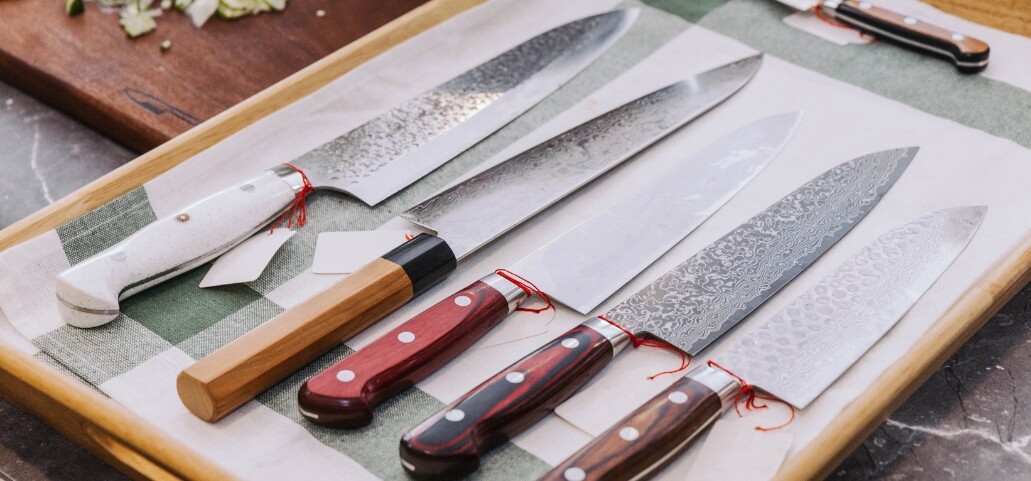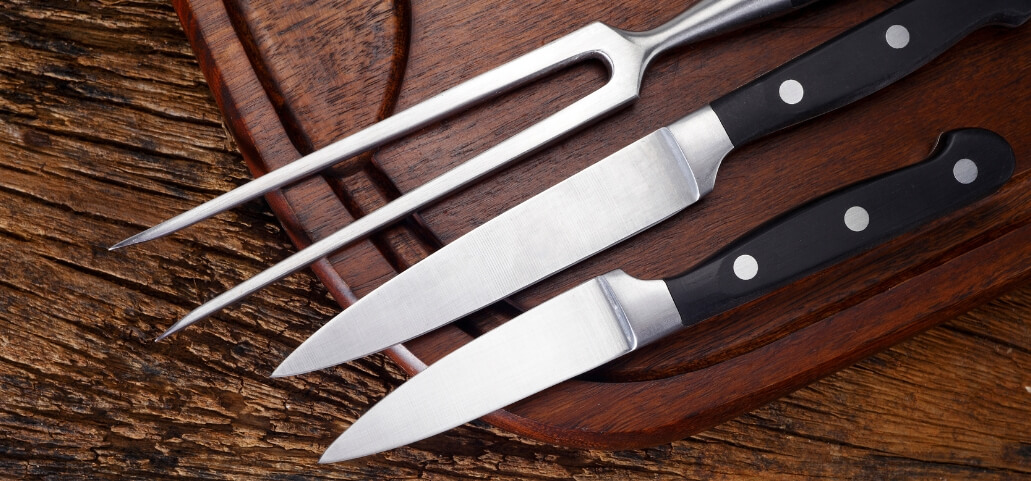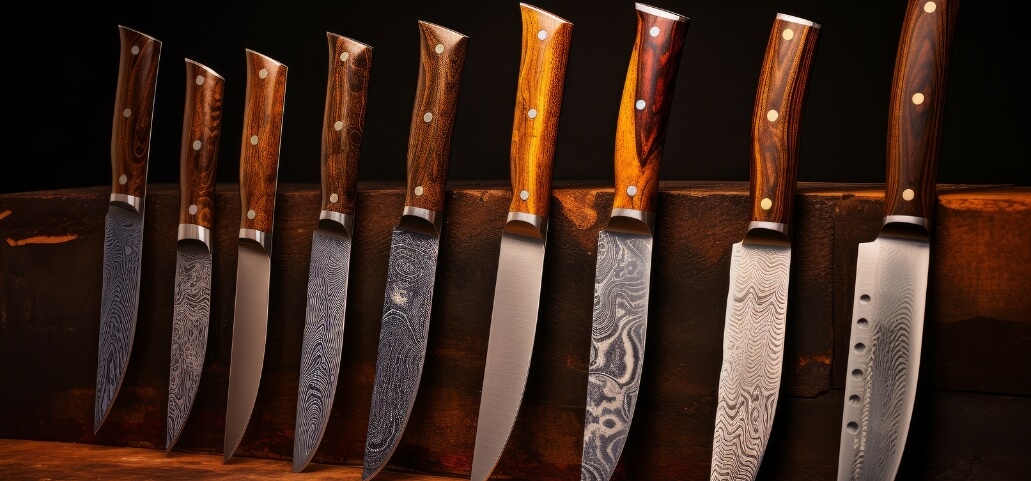Knowing how to store knives correctly is crucial for both safety and functionality. Unfortunately, many people make common mistakes that can lead to damaged blades and accidents. This article aims to provide a thorough guide on safe and effective knife storage solutions. Whether you’re a home chef or a culinary student, these tips will help you keep your knives in top condition. So let’s dive in and explore how to store knives.
Why Proper Knife Storage is Important
Before we get into the specifics of knife storage, let’s understand why it is so crucial. Here are some reasons why proper knife storage is essential:
- Safety: Storing knives properly reduces the risk of accidents and injuries. Placing them in a designated spot also prevents others from accidentally coming into contact with sharp blades.
- Protects Knives from Damage: Proper storage can protect your knives from wear and tear, keeping them sharp for longer. It also prevents chips, dings, and other damage that can occur when knives are stored haphazardly.
- Saves Space: When you store your knives correctly, you can save valuable counter and drawer space. This is especially important for those with smaller kitchens.
Different Types of Knife Storage Options

There are various ways to store knives, and the best option for you will depend on your needs and preferences. Some popular options for stowing knives are these:
- Magnetic Knife Strips: These strips contain strong magnets that hold knives in place, making them visible and easily accessible.
- Knife Blocks: Knife blocks have slots to hold individual knives securely. They are available in different materials such as wood, plastic, or metal.
- In-drawer Organizers: These organizers keep knives safely stored in a drawer, saving counter space.
- Knife Rolls/Cases: Ideal for traveling chefs or culinary students, these rolls or cases keep knives protected and organized while on the go.
- Wall-Mounted Racks: These racks are perfect for people who are short on drawer or counter space but still need a place to keep their knives.
- Drawer Inserts: Similar to in-drawer organizers, these inserts have individual slots for knives to prevent them from moving around and getting damaged.
- Knife Guards/Covers: These are plastic or fabric covers that protect individual knives from scratches and damage when stored in a drawer.
How to Choose the Best Knife Storage Solution for Your Needs
Choosing the ideal knife storage solution from the numerous available alternatives may be a real challenge. When you make your choice, keep these things in mind:
- Size and Quantity of Knives: The size and number of knives you have will determine how much storage space you need. Consider this before choosing a storage option to ensure it can accommodate all your knives.
- Counter/Drawer Space: If you have limited counter or drawer space, opt for a space-saving storage solution like a magnetic strip or wall-mounted rack.
- Budget: Take your money into account before making a selection, since there are knife storage options available in a range of prices. Always keep in mind that preserving your knives with high-quality storage might actually end up saving you money.
- Aesthetics: If you want your kitchen to look organized and stylish, consider how each storage option will fit into the overall aesthetic of your space.
Step-by-Step Guide to How to Store Knives

Now that you understand the importance of proper knife storage and have chosen a suitable option, here’s how to store your knives safely:
Step 1: Clean Your Knives
Make sure your knives are completely dry and clean before putting them away. This crucial step prevents rust or corrosion from forming on the blades, which can significantly decrease their lifespan and effectiveness. Use warm, soapy water to thoroughly clean the blades, ensuring you remove all food particles and residues. After washing, dry the knives completely with a soft cloth, paying special attention to the handle and the area where the blade meets the handle, as moisture can hide there and lead to rust.
Step 2: Choose an Appropriate Spot
Place your knife storage solution in a spot that is both easily accessible and safe. It should be away from heat sources and water to prevent any potential damage. Avoid areas near the stove, sink, or dishwasher, as the heat and moisture can negatively affect both the knives and their storage containers over time. Consider placing them in a designated drawer, a dedicated knife block on the counter, or a magnetic strip on the wall, ensuring that the location you choose keeps them out of reach of children.
Step 3: Store Knives Separately
To maintain the sharpness and longevity of your knives, avoid placing multiple knives in a single slot or compartment. This can dull their blades through contact. Using separate slots or compartments helps maintain the precision edges of the knives, enhancing their overall performance and extending their usability. Knife blocks with individual slots, drawer inserts, or magnetic strips can be excellent options for separate storage.
Step 4: Avoid Contact with Other Objects
Ensure there is sufficient space between each knife to prevent them from scratching or damaging each other. If you are using a magnetic strip, be mindful to space the knives apart adequately to avoid contact. This maintains the blades in perfect shape and keeps them sharp. If you store knives in a drawer, use knife guards or sheaths to prevent them from knocking against other utensils or each other.
Step 5: Be Mindful of Blade Orientation
When storing knives in a block, position the blades so they point away from you. This precaution reduces the risk of accidents when reaching for a specific knife. Holding the knife block at a slight angle can further minimize the risk of injury, as it provides a better view of the knife handles and makes it easier to select the correct one safely.
Step 6: Store Knives with Covers
If you prefer to store your knives in a drawer, always use plastic or fabric covers to protect the blades and keep them organized. Knife sheaths or guards can prevent the blades from chipping and also protect your fingers when reaching into the drawer. These covers also help keep the knives clean and free from dust or debris, ensuring they are always ready for use.
Step 7: Regularly Clean and Maintain Your Storage Solution
To ensure sanitary storage for your knives, keep your storage solution clean and free of debris. Periodically wipe down knife blocks, magnetic strips, and drawer inserts with a damp cloth, and allow them to dry completely before placing the knives back in. Regular maintenance of your storage solution not only keeps your knives in optimal condition but also extends the lifespan of the storage unit itself. This diligence ensures that your knives remain a reliable and safe tool in your kitchen for years to come.
By following these steps, you can ensure that your knives remain in excellent condition, providing you with the best performance for all your culinary needs. You can keep your kitchen safe and orderly while extending the life of your knives by storing them correctly.
Common Mistakes to Avoid in Knife Storage

When keeping your knives, make sure to avoid these frequent errors to keep them in the best possible condition:
- Storing Wet or Dirty Knives: Water and food residue can cause rust or corrosion on the blades, so make sure to clean and dry your knives before storing them.
- Placing Knives Loose in a Drawer: This can result in damage to both the knives and other items in the drawer. Use knife guards or sheaths if storing knives loose in a drawer.
- Storing Knives Uncovered: Exposing knives to air can also lead to rust and corrosion. Always cover your knives with blade guards or plastic/fabric covers when storing them in a drawer.
- Overloading a Storage Solution: Overcrowding your storage solution can cause damage to both the knives and the container. Make sure to leave enough space between each knife for safe and effective storage.
Final Thoughts
The security, edge, and life of your kitchen knives depend on how you store them. By following the tips and solutions provided in this guide, you can ensure your knives remain in top condition and your kitchen stays organized. Keep in mind that enhancing your kitchen’s efficiency and security may be achieved by purchasing the appropriate storage solution. Whether you’re a home chef, culinary student, or professional chef, these tips will help you maintain your knives and enhance your cooking experience.
Frequently Asked Questions
Q1: How to store knives safely when traveling?
Answer: When traveling, it’s best to use a knife bag or roll with individual compartments for each knife. This ensures they stay secure and protected during transport.
Q2. How often should I sharpen my knives?
Answer: Your knife-use habits will dictate how often you should sharpen them. If you want your knives to stay sharp and keep cutting well, you should probably sharpen them every few months.
Q3. Are magnetic knife strips safe for all types of knives?
Answer: Magnetic knife strips are safe for most types of knives, but it’s essential to use a high-quality strip with strong magnets to ensure the blades are securely held in place.
Q4. What’s the best way to clean a knife block?
Answer: To clean a knife block, remove all knives and use a brush to clean the slots. Wipe the exterior with a damp cloth and dry thoroughly before reinserting the knives.
Q5. Can I use a knife roll for long-term storage?
Answer: Knife rolls are ideal for short-term storage and transportation. For long-term storage, consider using a knife block, drawer insert, or magnetic strip to keep your knives in top condition.
Disclaimer: Please consult a qualified expert before using any of the information presented in this article. Always follow manufacturer guidelines for storing and maintaining your knives to ensure their longevity and performance. Proper care includes regular cleaning, sharpening, and safe storage, which can significantly extend the lifespan and efficiency of your knives.
Personal Experience: In my experience as a home chef, investing in proper knife storage has made a significant difference in my kitchen’s organization and safety. My magnetic knife strip keeps my knives easily accessible and sharp, ensuring that I can quickly grab the right tool for any task. Additionally, my knife guards protect the blades during transport, preventing any accidental nicks or damage. This setup not only saves me time during meal prep but also prolongs the lifespan of my knives, making my overall cooking experience more efficient and enjoyable.
Why Trust Our Content?
Our content is researched and reviewed by culinary experts to ensure accuracy and relevance. In order to keep standards high, every data is checked and double-checked. We’re committed to providing valuable, reliable information to enhance your kitchen experience, whether you’re a seasoned chef or just starting. From tips on selecting fresh ingredients to step-by-step guides on complex techniques, we aim to be your trusted kitchen resource.

